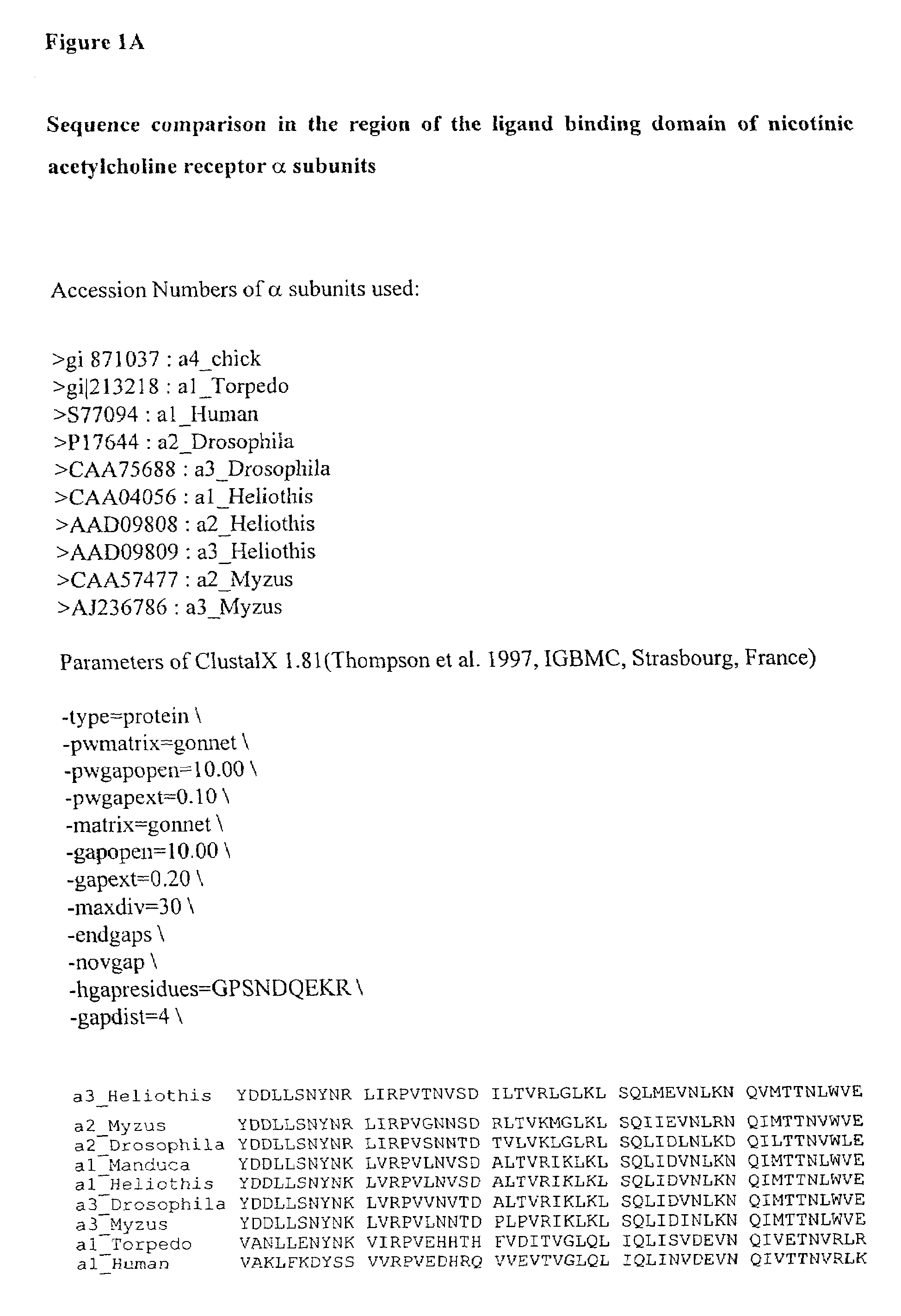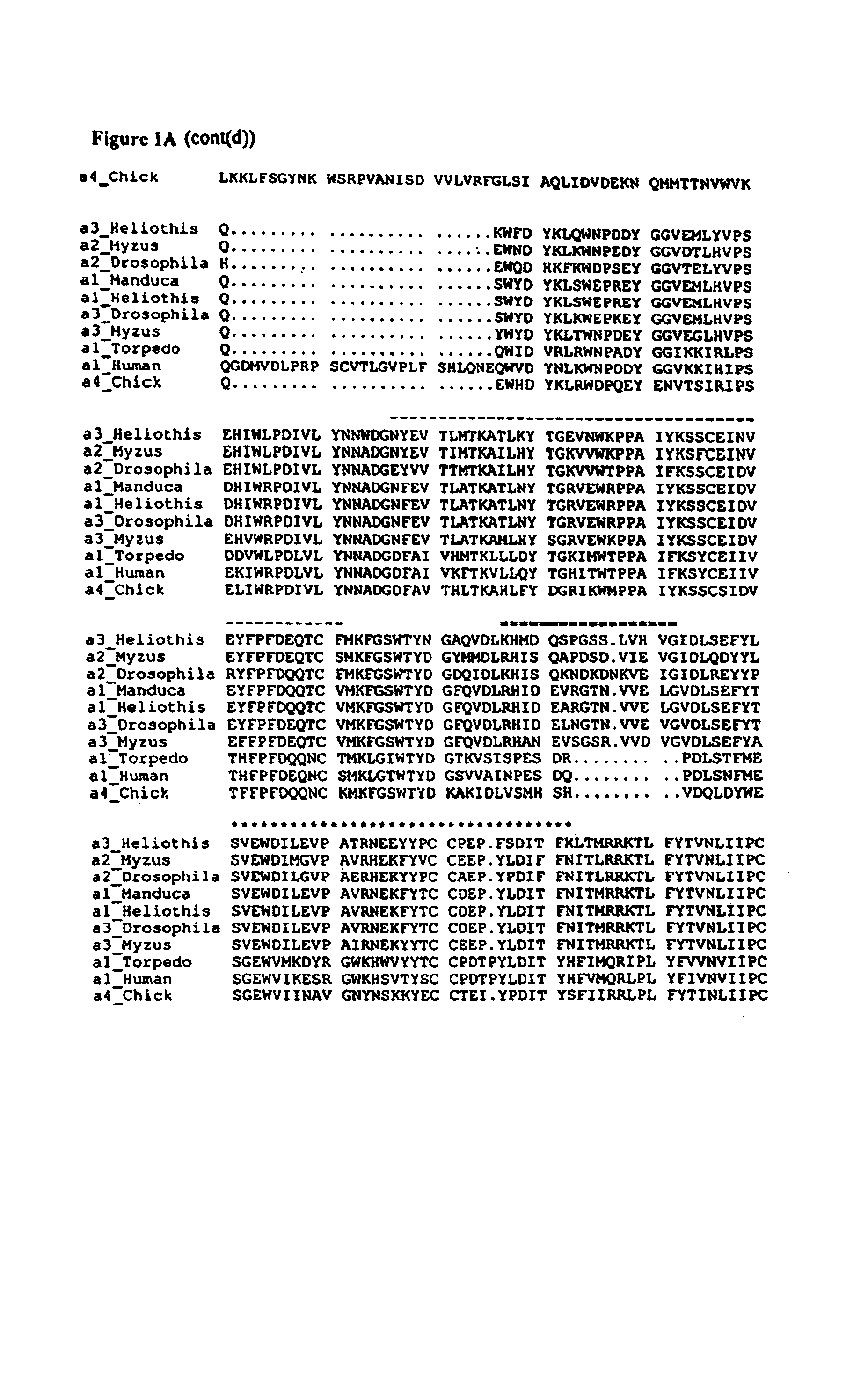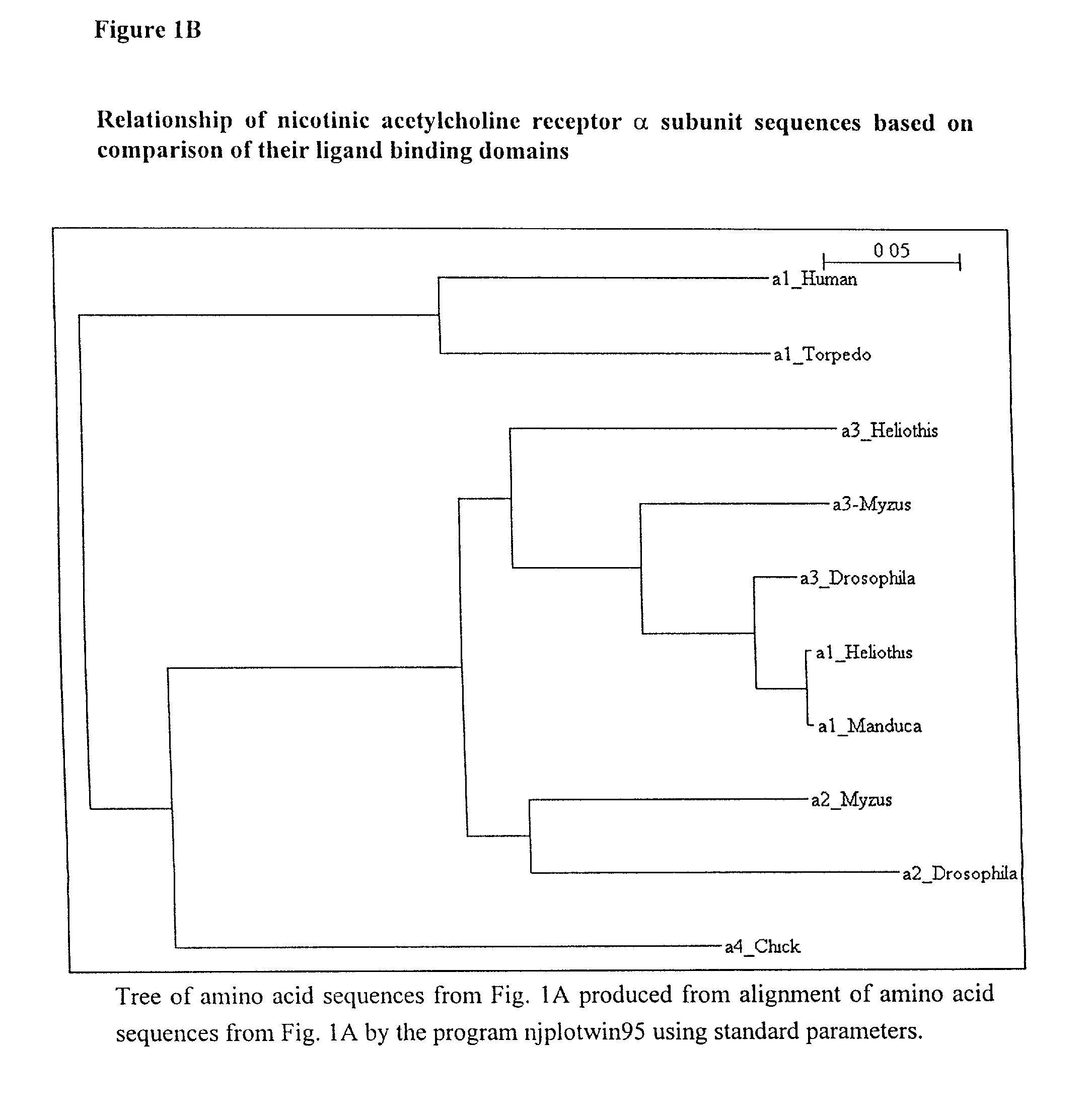Acetylcholine receptor subunits
a technology of acetylcholine receptor and subunit, which is applied in the direction of peptides, dna/rna fragmentation, tissue culture, etc., can solve the problems of inability to express nicotinic receptors, the recombinant expression of insect nicotinic receptors is more difficult than that of analogous receptors,
- Summary
- Abstract
- Description
- Claims
- Application Information
AI Technical Summary
Benefits of technology
Problems solved by technology
Method used
Image
Examples
example 1
Construction of the Nucleic Acids Described
General
[0094]The manipulation of polynucleotides took place by standard methods of recombinant DNA technology (Sambrook et al. 1989). The bioinformatic processing of nucleotide and protein sequences took place with the GCG program package version 10.0 (GCG Genetics Computer Group, Inc., Madison Wis., USA).
A) Construction of the Nucleic Acid Shown in SEQ ID NO: 2
[0095]a) The SacI restriction cleavage site in a pBluescript KS+ (Stratagene, Heidelberg, Germany) was deleted using Quickchange (Stratagene, Heidelberg, Germany) in accordance with the manufacturer's instructions and using the following oligonucleotides: SEQ ID NO: 14 (5′-GAACAAAAGCTGGAGGTCCACCGCGGTGGC-3′) and SEQ ID NO: 15 (5′-GCCACCGCGGTGGACCTCCAGCTTTTGTTC-3′).[0096]b) The template used for a polymerase chain reaction (PCR) was the cDNA of the α1 subunit of the Heliothis virescens nicotinic acetylcholine receptor (Genbank AJ000399) in the vector pBluescript KS+ (10 ng / μl). The pri...
example 2
Expression of the Modified Acetylcholine Receptors in Xenopus Oocytes
General
[0108]In order to characterize the effect of acetylcholine, imidacloprid and other potential agonists of acetylcholine receptors on the modified receptors prepared, electrophysiological measurements were carried out on xenopus oocytes. The corresponding methods and experimental designs have been described many times in the literature (see, for example, Kettennann & Grantyn, eds. 1992). Expression of cloned or recombinant receptor genes in xenopus oocytes has a number of technical advantages. The oocytes can be stimulated by simple injection of mRNA or cDNA to express the corresponding receptors, and the necessary electrophysiological measurements are possible particularly simply and conveniently on these cells (for example Bertrand et al. 1992, Amar et al. 1993, Cooper et al. 1996).
Expression of the Modified Receptors in Xenopus Oocytes
[0109]Xenopus oocytes were isolated and prepared as previously described ...
example 3
Functional Expression of a Modified Acetylcholine Receptor in Sf9 Cell Lines Containing the Modified Subunit Shown in SEQ ID NO: 3
[0114]Spodoptera frugiperda 9 (Sf9) cells were transfected simultaneously with cDNA expression plasmids which code for the modified heliothis / chicken subunit and for the chicken β2 subunit using a liposomal transfection reagent (DAC-30, Eurogentec, Belgium). A cDNA expression construct for the green fluorescent protein from Aequoria victoria was transfected simultaneously. This makes it possible simply to identify transfected cells because experience has shown that most of the cells which have taken up one of the constructs have also taken up the other ones. 24 to 48 hours after transfection, the currents through the cell membrane of the Sf9 cells were measured by whole-cell recordings. For this purpose, the potential difference across the cell membrane was kept constant at −70 mV. Substances were applied using the U-tube reversed flow technique (Fenwick ...
PUM
| Property | Measurement | Unit |
|---|---|---|
| pH | aaaaa | aaaaa |
| voltage clamp amplifier | aaaaa | aaaaa |
| volume | aaaaa | aaaaa |
Abstract
Description
Claims
Application Information
 Login to View More
Login to View More - R&D
- Intellectual Property
- Life Sciences
- Materials
- Tech Scout
- Unparalleled Data Quality
- Higher Quality Content
- 60% Fewer Hallucinations
Browse by: Latest US Patents, China's latest patents, Technical Efficacy Thesaurus, Application Domain, Technology Topic, Popular Technical Reports.
© 2025 PatSnap. All rights reserved.Legal|Privacy policy|Modern Slavery Act Transparency Statement|Sitemap|About US| Contact US: help@patsnap.com



